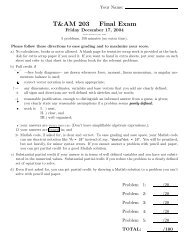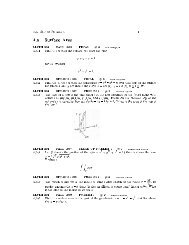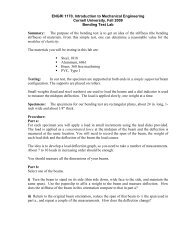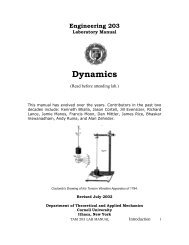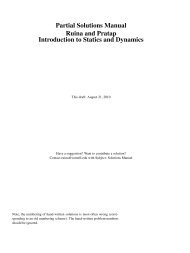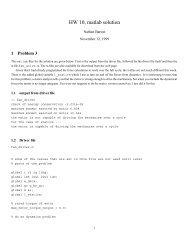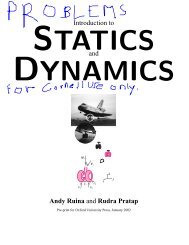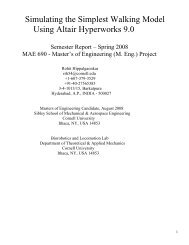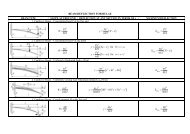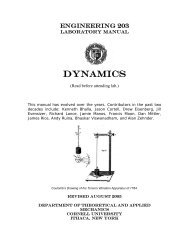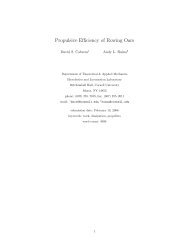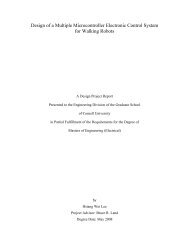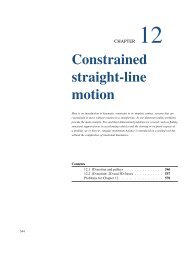Introduction to and Andy Ruina and Rudra Pratap
Introduction to and Andy Ruina and Rudra Pratap
Introduction to and Andy Ruina and Rudra Pratap
You also want an ePaper? Increase the reach of your titles
YUMPU automatically turns print PDFs into web optimized ePapers that Google loves.
20 Chapter 0. Preface 0.2. A note on computation<br />
far more easily drawn using a computer than by h<strong>and</strong>. Most often you<br />
can organize your data in<strong>to</strong> a set of .x; y/ pairs s<strong>to</strong>red in an x list <strong>and</strong> a<br />
corresponding y list. A simple computer comm<strong>and</strong> will then plot x vs<br />
y. The pseudo-code below, for example, plots a circle using 100 points<br />
npoints = [0 1 2 3 ... 100]<br />
theta = npoints * 2 * pi / 100<br />
x = cos(theta)<br />
y = sin(theta)<br />
plot y vs x<br />
where npoints is the list of numbers from 1 <strong>to</strong> 100, theta is a list<br />
of 100 numbers evenly spaced between 0 <strong>and</strong> 2 <strong>and</strong> x <strong>and</strong> y are lists<br />
of 100 corresponding x; y coordinate points on a circle.<br />
ODEs The result of using the laws of dynamics is often a set of differential<br />
equations which need <strong>to</strong> be solved. A simple example would be:<br />
Find x at t D 5 given that dx<br />
dt<br />
D x <strong>and</strong> that at t D 0, x D 1.<br />
The solution <strong>to</strong> this problem can be found easily enough by h<strong>and</strong> <strong>to</strong><br />
be x.5/ D e 5 . But often the differential equations are just <strong>to</strong>o hard for<br />
pencil <strong>and</strong> paper solution. Fortunately the numerical solution of ordinary<br />
differential equations (ODEs) is already programmed in<strong>to</strong> scientific<br />
<strong>and</strong> engineering computer packages. The simple problem above<br />
is solved with computer code equivalent <strong>to</strong> these informal comm<strong>and</strong>s:<br />
ODES = { xdot = x }<br />
ICS = { xzero = 1 }<br />
solve ODES with ICS until t=5<br />
which will yield a list of values for paired values for t <strong>and</strong> x the last of<br />
which will be t D 5 <strong>and</strong> x close <strong>to</strong> e 5 148:4.



